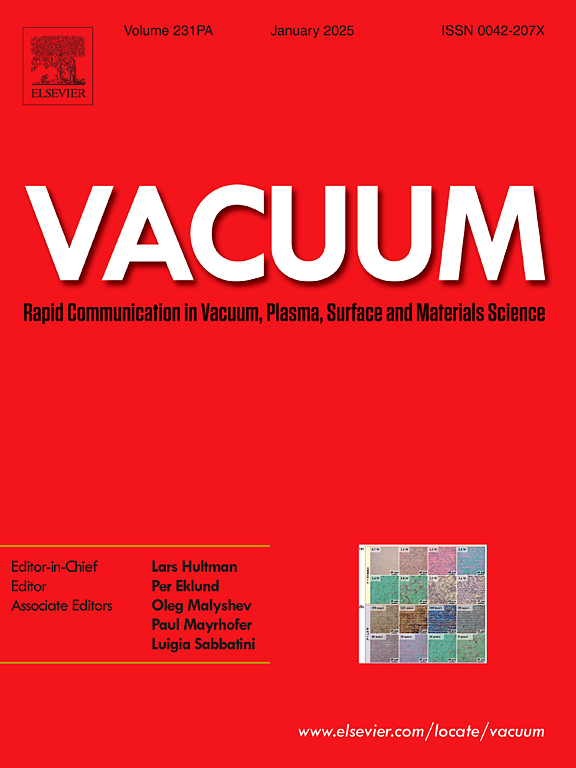Sr3SbN and Sr3BiN: two anti-perovskite thermoelectric materials with low lattice thermal conductivity
IF 3.8
2区 材料科学
Q2 MATERIALS SCIENCE, MULTIDISCIPLINARY
引用次数: 0
Abstract
This study comprehensively investigates the thermoelectric properties of anti-perovskite compounds Sr3SbN and Sr3BiN by combining first-principles calculations with the semi-classical Boltzmann theory framework, while incorporating the electron-phonon averaging (EPA) method. The results demonstrate that Sr3SbN and Sr3BiN exhibit excellent dynamical and mechanical stability, providing a solid theoretical foundation for their experimental synthesis. The calculated band gap values of Sr3SbN and Sr3BiN are 1.03 eV and 1.05 eV, respectively. Their conduction and valence band degeneracies (Nv) are 2 and 3, respectively, which facilitates the optimization of carrier transport properties. At 300 K, the lattice thermal conductivities (κL) of Sr3SbN and Sr3BiN are 2.28 and 2.67 W m−1 K−1, respectively, values comparable to that of the classical thermoelectric material PbTe (2.3 W m−1 K−1). At 400 K, the maximum ZT values for p-type doped Sr3SbN and Sr3BiN reach 0.63 and 0.71, respectively, providing valuable theoretical insights for the development of next-generation clean energy conversion devices.

Sr3SbN和Sr3BiN:两种低晶格导热系数的反钙钛矿热电材料
本研究结合第一性原理计算和半经典玻尔兹曼理论框架,结合电子-声子平均(EPA)方法,全面研究了抗钙钛矿化合物Sr3SbN和Sr3BiN的热电性质。结果表明,Sr3SbN和Sr3BiN具有良好的动力学和力学稳定性,为其实验合成提供了坚实的理论基础。计算得到Sr3SbN和Sr3BiN的带隙值分别为1.03 eV和1.05 eV。它们的传导简并度和价带简并度分别为2和3,有利于优化载流子输运性质。在300 K时,Sr3SbN和Sr3BiN的晶格热导率分别为2.28和2.67 W m−1 K−1,与经典热电材料PbTe的晶格热导率(2.3 W m−1 K−1)相当。在400 K时,p型掺杂Sr3SbN和Sr3BiN的ZT最大值分别达到0.63和0.71,为下一代清洁能源转换器件的开发提供了有价值的理论见解。
本文章由计算机程序翻译,如有差异,请以英文原文为准。
求助全文
约1分钟内获得全文
求助全文
来源期刊

Vacuum
工程技术-材料科学:综合
CiteScore
6.80
自引率
17.50%
发文量
0
审稿时长
34 days
期刊介绍:
Vacuum is an international rapid publications journal with a focus on short communication. All papers are peer-reviewed, with the review process for short communication geared towards very fast turnaround times. The journal also published full research papers, thematic issues and selected papers from leading conferences.
A report in Vacuum should represent a major advance in an area that involves a controlled environment at pressures of one atmosphere or below.
The scope of the journal includes:
1. Vacuum; original developments in vacuum pumping and instrumentation, vacuum measurement, vacuum gas dynamics, gas-surface interactions, surface treatment for UHV applications and low outgassing, vacuum melting, sintering, and vacuum metrology. Technology and solutions for large-scale facilities (e.g., particle accelerators and fusion devices). New instrumentation ( e.g., detectors and electron microscopes).
2. Plasma science; advances in PVD, CVD, plasma-assisted CVD, ion sources, deposition processes and analysis.
3. Surface science; surface engineering, surface chemistry, surface analysis, crystal growth, ion-surface interactions and etching, nanometer-scale processing, surface modification.
4. Materials science; novel functional or structural materials. Metals, ceramics, and polymers. Experiments, simulations, and modelling for understanding structure-property relationships. Thin films and coatings. Nanostructures and ion implantation.
 求助内容:
求助内容: 应助结果提醒方式:
应助结果提醒方式:


